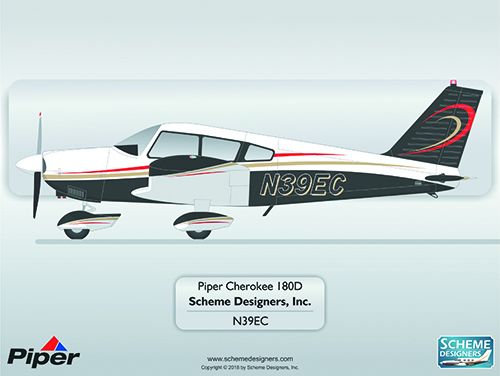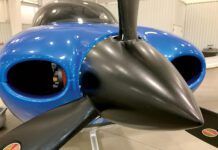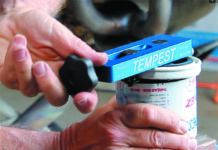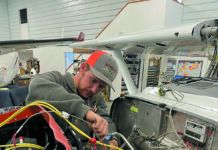Paint scheme designs are most often influenced by the designs used by manufacturers. Years ago, we purchased many more new aircraft, and factories were churning out sparkling new models to fulfill that demand. Most often, design was strongly influenced by manufacturing. Straight lines and spaces between the colors are easier and less costly to lay out and paint, plus complexity in design would often cause a bottleneck in production.
When Scheme Designers was started in 1997, a key stylistic approach was to emulate airflow across the aircraft. At the time, we were mocked for going against the status quo. Now, implementation of curved lines and smooth flows has become the standard approach to paint scheme design. As manufacturer throughput is drastically lower than the heydays of the late 70s, they have been focusing more attention on aesthetics and marketing, and thankfully, paint scheme designs have become more interesting and elegant.
The average age of our fleet is well over 50 years old, and more aircraft are being repainted to preserve their integrity, lengthen the useful life and give owners a sense of new. Aftermarket paint shops are far more adept at implementing unique custom designs. Every project for a paint shop is unique, no matter how complex or simple, and layout artists have become especially skilled at complex paint scheme design layouts. Further, there are more tools available, such as computer cut paint masks, that allow for complex layouts to be accomplished cost-effectively and quickly. As there are far fewer new production aircraft entering the market, the impact of their new paint scheme designs is also having less of an effect on owners, and more owners are opting for personalized custom designs.
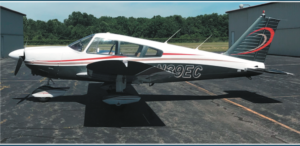
While the use of curvy, aerodynamic flowing design is still prominent, recent design work by Cirrus and Cessna has focused on more edgy design styles, which are becoming more common in the aftermarket as well. In a sense, design is going full circle— with edgy designs being constructed using straight line stripes with sharp angles and direction changes.
The most common design approaches that owners are currently taking include:
• Flowing design—Speaks to the aerodynamics of the airframe. An example of a flowing design is the Piper Cherokee shown on this page.
• Edgy design—Yields a more aggressive look.
• Highly customized design—New and unusual, making the aircraft really stand out on the ramp.
• Retro design—Implementation of older design styles that speak to the age of the airframe.
The other major design consideration is color coverage. Does an owner want an overall white aircraft with some stripes? Most of our clients do not. But the majority of them opt for a split base, most typically a light top and a dark belly. This adds significant ramp presence and appeal. A dark color on the bottom of an aircraft also helps to hide unsightly grime from oil and exhaust residue, while increasing the time between washing, although we encourage keeping the belly clean. We are also seeing an increasing number of clients using interesting overall colors, rather than the standard white, creamy white and silver base colors commonly used.
Whatever the design approach, it is key that designs be accurately specified for the paint shop. Often, design concepts presented to the paint shop end up looking poor on the aircraft. Because of optical illusions created when looking at a paint scheme defined by masking tape, stripes often end up too skinny and white spaces too wide. Curves can end up not being smooth, and transitions from the fuselage to the tail poorly executed. As paint is one of the more expensive maintenance items, giving the design and color choices careful attention is essential. Working with a professional designer has become a common step in the repainting process, and the detailed dimensioned specifications that result are essential tools in ensuring accurate implementation of the paint scheme onto the aircraft.
Contributor Craig Barnett is CEO of Scheme Designers in New Jersey.

